
Essential Checklist for Health Emergencies on Flights
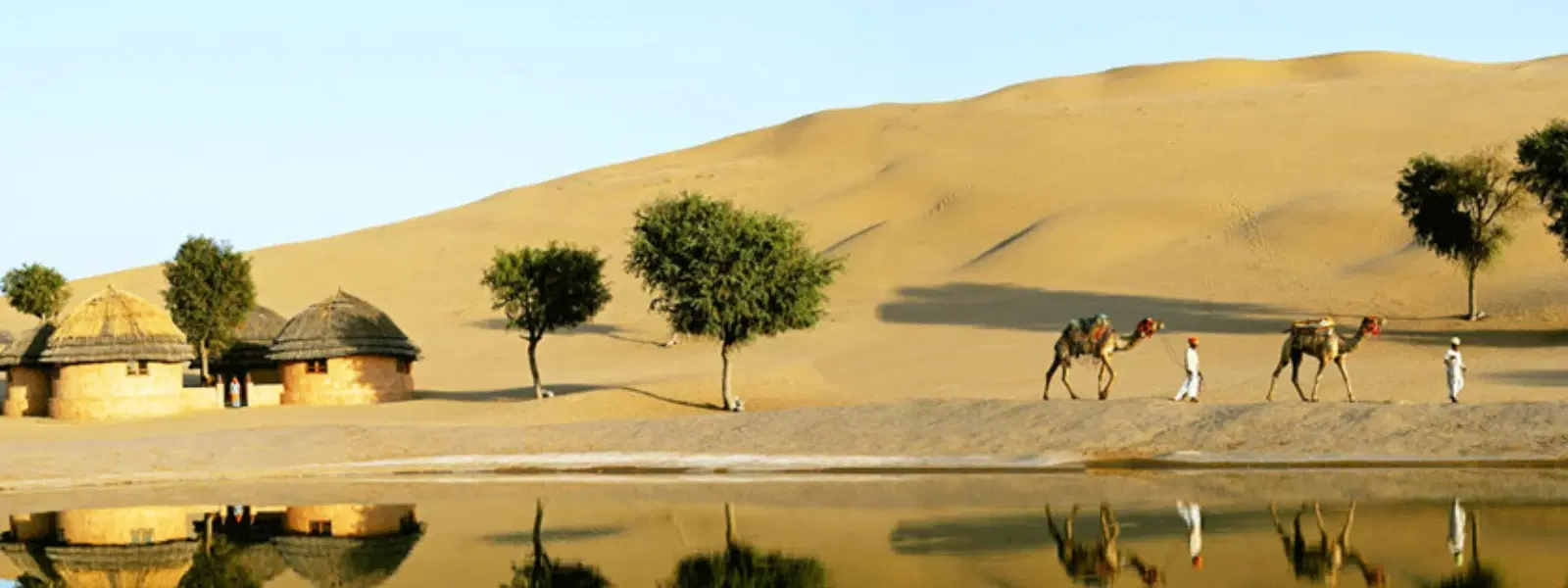
FAQs on Village Tourism Experience in Rajasthan
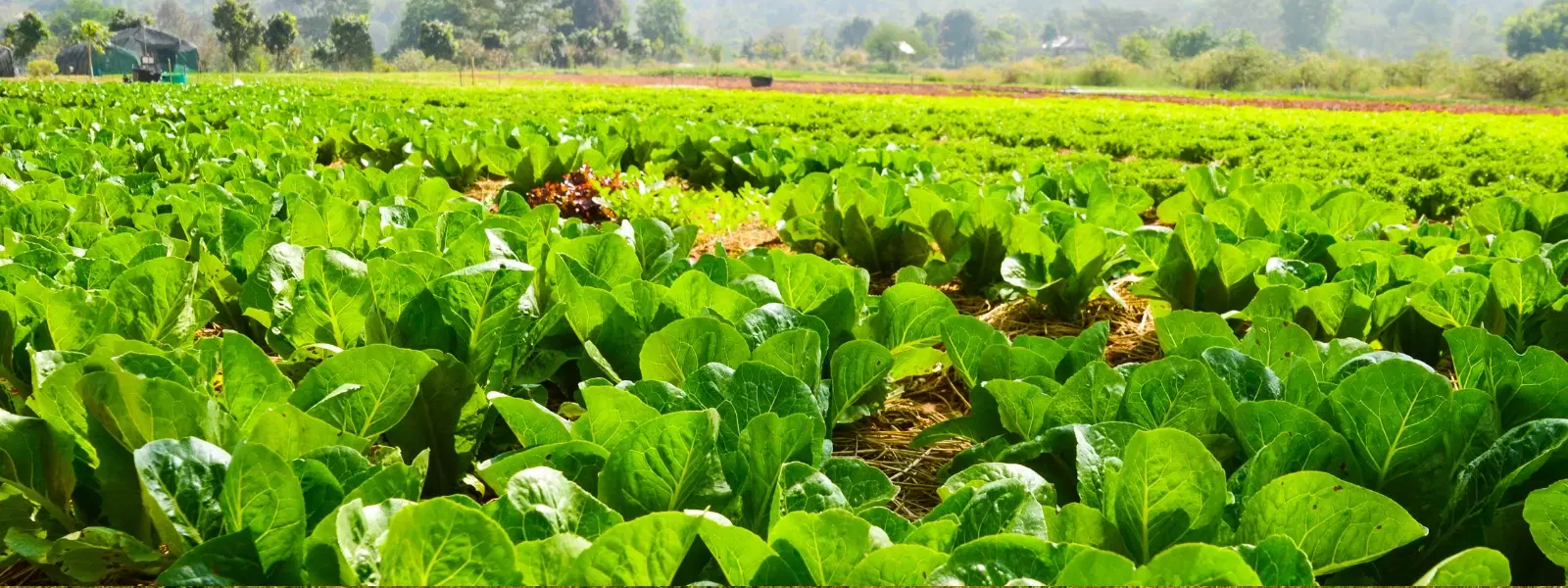
FAQs About Farm Stays in Punjab Fields: All You Need to Know
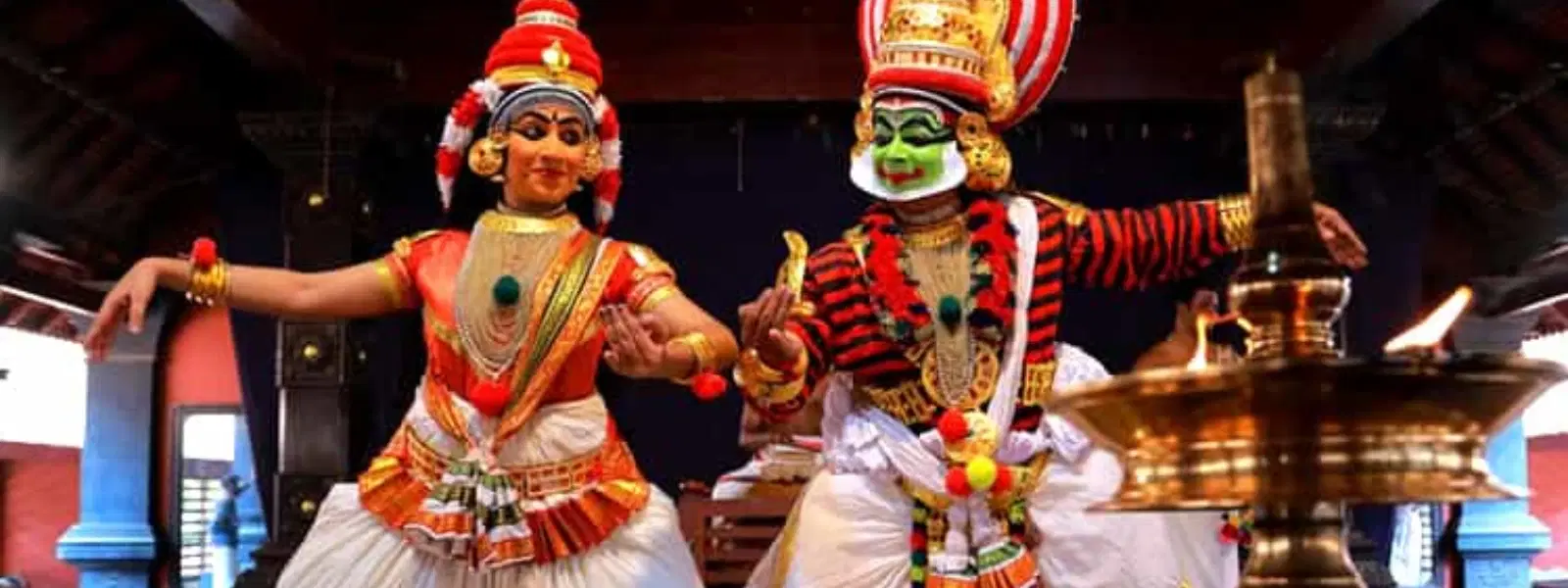
FAQs About Kalaripayattu: Kerala's Ancient Martial Art
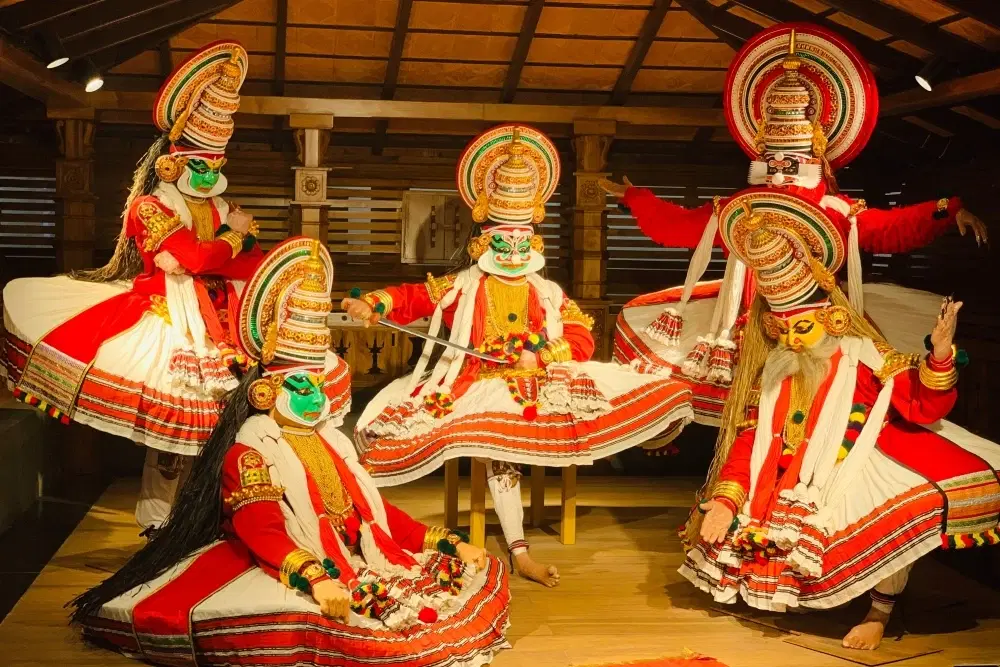
FAQs About Kathakali Performance in Kochi: All You Need to Know
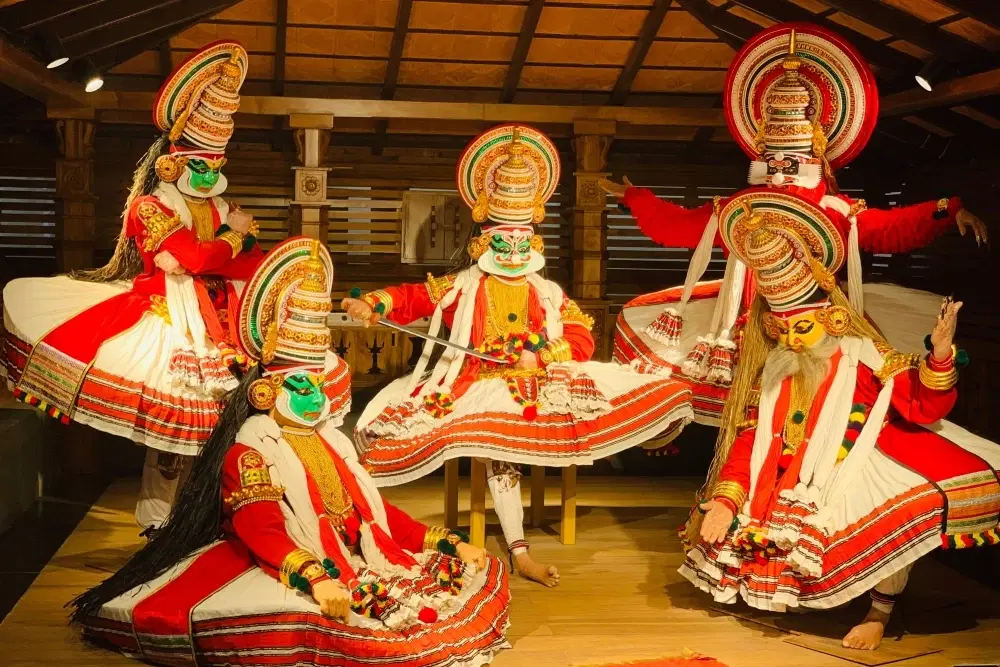
FAQs About Theyyam Festival North Kerala Dates & Rituals

Imagine you’re mid-flight when suddenly a passenger nearby experiences a health emergency. In those crucial moments, staying calm and being ready to act can make all the difference. This guide provides you with an essential checklist for managing flights emergency health conditions, ensuring you are well-prepared for any unexpected scenarios during your journey.
Air travel affects the body in many ways. Reduced cabin pressure, dehydration, and prolonged periods of sitting can lead to discomfort and even trigger health issues. Passengers might experience dizziness, swelling, or respiratory challenges due to these factors.
Medical emergencies on flights, such as fainting, allergic reactions, heart attacks, or panic attacks, can arise unexpectedly. The high altitude and limited access to immediate medical facilities often complicate these situations. Understanding these risks helps ensure that every traveler can be ready to respond effectively.
Before you embark on your journey, prepare a compact health kit. This kit should include essential medications prescribed by your doctor, a basic first-aid kit, and a copy of your medical history or prescriptions. If you have a chronic condition, carrying documentation such as doctor’s notes can be especially useful during emergencies.
If you have ongoing health issues, a recent surgery, or are pregnant, a pre-flight consultation with your doctor is crucial. Your healthcare provider can guide you on the necessary precautions tailored to your specific needs. For travelers managing conditions like diabetes or asthma, these check-ups can ensure you have all the medications and advice required to minimize health issues during air travel.
Knowing the symptoms of a medical emergency is vital. Look out for signs such as shortness of breath, severe chest pain, or unusual behavior. In these moments, it is important to stay calm and assess the situation before taking action.
Follow this step-by-step checklist to manage any health issues on board:
Alert flight attendants immediately. They are trained to handle a variety of medical emergencies on flights.
Use in-flight medical equipment if available, such as oxygen masks or first-aid kits.
If available, communicate with medical professionals via radio support to get further guidance.
Carefully follow instructions provided by the crew or any responding medical personnel.
Did you know that flight attendants are trained in basic first aid and equipped to handle common medical emergencies? Trust their expertise during a crisis.
After a medical incident in-flight, it is important to seek professional medical care immediately upon landing. Visiting a local hospital or clinic ensures that any underlying issues are properly addressed and monitored.
Documenting the event with the airline is beneficial for both follow-up care and any potential insurance claims. This report can provide a detailed account of the incident and aid in any subsequent investigations or procedures.
Maintaining proper hydration is key. Drink water regularly throughout the flight and avoid alcohol and excessive caffeine, which can dehydrate you. Eating light and nutritious meals before and during the flight can also boost your overall well-being.
Simple exercises and stretching routines, even while seated, help circulate blood and prevent muscle stiffness. Take a few moments to stretch your legs, shoulders, and neck during the flight.
Travel can sometimes trigger anxiety or stress. Practice deep breathing techniques, listen to calming music, or engage in quiet activities like reading. These steps can help manage any mental stress during air travel, ensuring a smoother journey for everyone involved.
Your journey begins well before you board the plane. Tata Neu simplifies the booking experience, offering seamless travel planning that integrates exclusive loyalty benefits. With Tata Neu, enjoy the comfort of knowing that every booking – whether it's for your flight or a luxury stay at Taj Hotels, a vibrant experience at Vivanta, or a homely retreat at amã Stays & Trails – comes with rewards. Earn NeuCoins on all bookings (1 NeuCoin = 1₹ saving) and unlock special offers tailored just for you. This approach not only makes travel more affordable but enriches it with the promise of comfort, safety, and the legacy of Tata hospitality.
Alert the flight attendants immediately. They are trained in basic first aid and first response to medical emergencies.
Airlines may restrict travel for passengers with serious conditions that could worsen in flight or endanger others. Consult with your doctor before flying.
Most flights are equipped with first-aid kits, oxygen equipment, and Automated External Defibrillators (AEDs) to handle in-flight emergencies.
Yes, flight attendants receive comprehensive training in CPR and first-aid to manage health issues and emergencies effectively.
Investment in travel insurance is highly recommended to cover unexpected medical expenses incurred during or immediately after your flight.
Being prepared for health emergencies on flights is crucial for ensuring safe and stress-free travel. By understanding the risks associated with air travel, taking proactive steps in pre-flight preparation, executing a calm and effective response during an emergency, and following up with appropriate post-flight care, travelers can maintain their health and peace of mind. Tata Neu’s integrated services and loyalty rewards enhance your journey, ensuring that comfort and safety go hand in hand with every booking.

Rajasthan’s rural landscapes enchant visitors with their vibrant hues, rustic charm, and deep-rooted traditions. The region’s traditional village life offers an unparalleled opportunity to witness centuries-old customs, experience eco-tourism, and immerse oneself in the true essence of cultural tourism in Rajasthan. This blog post answers frequently asked questions about the village tourism experience in Rajasthan, ensuring travelers are well-equipped to create unforgettable memories in these heritage-rich settings.
Village tourism in Rajasthan is a unique travel concept blending cultural, eco, and heritage tourism. It offers a holistic experience by taking visitors into the heart of Rajasthan’s rural life, where age-old traditions, local crafts, and community-driven practices thrive. Travelers can witness organic farming methods, listen to folk tales passed down through generations, and engage with a lifestyle far from the urban rush.
The state’s diverse landscapes, from rolling sand dunes to lush oases, set the perfect stage for authentic village tourism. Rajasthan is celebrated for its heritage villages, vibrant folk culture, and exquisite local crafts. Here, traditional village life in Rajasthan is not only preserved but also celebrated, offering visitors an immersive journey into a world where every corner tells a story.
A number of well-known heritage villages, such as Bishnoi, Mandawa, Khimsar, and Samode, define the premier village tourism experience in Rajasthan. Each village is styled with its own history, iconic sand dunes, majestic forts, and serene settings that reveal the soul of Rajasthan rural tourism.
Visitors can indulge in an array of engaging activities. Imagine enjoying an early morning camel ride across vast deserts, partaking in pottery workshops to learn the art of traditional ceramics, and watching mesmerizing folk dance performances that narrate delightful stories of yore. These activities not only bring visitors closer to the village traditions but also promote eco-tourism Rajasthan villages, which follow sustainable and responsible practices.
One of the highlights of exploring Rajasthan villages is the opportunity to spend a night in a traditional village home or eco-friendly accommodation. These authentic village stays in Rajasthan remove you from the confines of modern hotels and invite you to be a part of daily communal life, sharing meals, stories, and traditions with locals—a true deep dive into traditional village life Rajasthan.
For an optimal experience, plan your visit during the cooler months or during local festivals when the villages come alive with celebrations and bustling activity. Spring and autumn are ideal, providing comfortable weather and an opportunity to fully appreciate every aspect of Rajasthan rural tourism.
Village tourism packages in Rajasthan vary in price based on the duration, activities included, and quality of accommodations. Whether you are seeking inexpensive, budget-friendly options suited for the wanderer or tailored, premium packages for the planner and professional, there's something to fit every travel need. Factors such as local transportation, guided tours, and hands-on experiences influence the overall cost.
Immerse yourself fully by respecting local customs and traditions. Pack essentials like sunscreen, a hat, comfortable clothing, and sturdy footwear to handle outdoor activities. Engage actively with villagers as they are the custodians of local crafts, folk culture, and a way of life that’s both inspiring and sustainable.
Village tourism plays a pivotal role in sustaining age-old traditions, from intricate handcrafted textiles to soulful folk music and dance. By choosing to participate in cultural tourism in Rajasthan, visitors help fund community initiatives focused on preserving these rich traditions, ensuring they remain vibrant for future generations.
Eco-tourism Rajasthan villages are champions of sustainable travel practices. Through mindful tourism, these communities minimize their carbon footprint by embracing eco-friendly initiatives and local conservation projects. When you opt for a village tourism experience Rajasthan, you also contribute to preserving the natural beauty of these areas, making each journey beneficial for both traveler and host community.
Did you know that village tourism in Rajasthan not only enriches travelers but also empowers local communities by creating sustainable livelihoods and preserving cultural heritage?
Some of the best villages include Bishnoi, Mandawa, Khimsar, Samode, and Chandelao, each offering unique cultural and heritage experiences.
You can enjoy camel rides, pottery workshops, folk dance performances, exploring local crafts, and engaging in eco-tourism initiatives.
Yes, village tourism is ideal for families as it provides safe, engaging, and educational experiences for travelers of all ages.
You can book packages through local tour operators, Rajasthan tourism websites, or travel agencies specializing in rural tourism.
Bring comfortable clothing, sunscreen, a hat, sturdy footwear, and any essential items for outdoor activities like camel rides or nature walks.
The village tourism experience in Rajasthan is a captivating blend of culture, heritage, and immersive rural living. It offers a gateway to explore vibrant traditions, eco-friendly practices, and the genuine warmth of rural communities. With a well-planned itinerary and respect for local customs, every traveler is invited to dive deep into the essence of Rajasthan’s folk culture and sustainable village tours, creating memories that last a lifetime.

Imagine waking up to the golden hues of mustard fields, the aroma of freshly baked bread, and the soothing sounds of rural Punjab. Farm stays in Punjab fields offer a unique blend of tranquility, culture, and authenticity. This blog unfolds everything you need to know about these unique experiences, diving deep into rural tourism, eco-friendly accommodations, and traditional Punjabi experiences. By the end of this post, you'll understand what farm stays in Punjab entail, how they contribute to rural tourism, and why they provide an ideal escape into the authentic Punjabi countryside.
Farm stays are accommodations located on working farms that allow you to experience rural life firsthand. These experiences are deeply rooted in Punjabi culture and traditions. Staying on a farm exposes you to daily agricultural routines, traditional cooking, and the warm hospitality of rural communities. Whether it's enjoying organic meals or participating in daily chores, you truly immerse yourself in the local lifestyle.
Punjab is known for its rich agricultural heritage and expansive, scenic countryside. Farm stays in Punjab fields let you escape the hectic pace of urban life and provide an authentic insight into agrarian practices. This region is more than just a destination; it is an experience that reconnects you with nature and traditional ways of living, making it an ideal choice for travelers seeking a change of pace.
In the heart of Punjab, several eco-friendly stays focus on sustainability and organic farming practices. These accommodations emphasize nature conservation, use renewable resources, and typically offer organic meals. For eco-conscious travelers, these stays provide an opportunity to enjoy luxury while respecting the environment.
For those who wish to dig deeper into local customs, traditional Punjabi farm experiences offer authentic hospitality. You can participate in activities like cooking classes with local ingredients, farming, and enjoying the sounds of folk music. These stays are steeped in local traditions, providing a firsthand look at the rich culinary and cultural heritage of Punjab.
Farmhouse stays in Punjab come in a variety of styles: from luxurious farmhouses offering premium amenities to more humble, budget-friendly rural homestays. Luxury options may include spacious rooms, modern amenities, and curated experiences, whereas budget stays focus on providing a genuine connection with rural life at an affordable cost. This variety ensures that every traveler, from the wanderer to the luxury seeker, finds an option tailored to their needs.
Participating in farming activities makes your stay interactive and educational. Many farms offer tours where you can learn about organic practices, take a stroll through endless mustard fields, and observe the cycles of agricultural life. These agricultural retreats give you a chance to connect with the land and understand the importance of sustainable farming.
Beyond farming, farm stays in Punjab are gateways to rich cultural immersion. Engage in lively folk dances, try your hand at Punjabi cooking classes, or attend local festivals where traditions come alive. This cultural engagement enriches your visit, whether you're a family looking for memorable experiences or a professional in search of unique leisure activities.
The serene environment of rural Punjab offers a perfect backdrop for relaxation and wellness. Many farm stays provide designated spaces for yoga and meditation. The natural calm of the countryside, coupled with locally sourced fresh food and peaceful surroundings, creates a rejuvenating retreat for both body and mind.
Popular areas for farm stays include the vicinity of Amritsar, Anandpur Sahib, and other picturesque spots in Punjab. These locations blend accessibility with scenic beauty, ensuring that both cultural landmarks and natural attractions are within easy reach. Each destination offers its own distinct flavor of rural charm.
When choosing a farm stay, consider your budget, the amenities offered, and the proximity to local attractions. Ask questions about the type of experience you are seeking—whether it is a peaceful retreat, an educational tour, or a deep immersive cultural experience. Read reviews and inquire about the specific elements that matter most to you.
Pack comfortable clothing suitable for outdoor activities and variable weather conditions. Essentials include comfortable footwear, sun protection, and perhaps a light jacket for cooler mornings. Remember to include any travel necessities that will help you fully enjoy your rustic getaway without the hassle.
Did you know? Farm stays in Punjab fields are not just accommodations—they’re gateways to experiencing the vibrant rural lifestyle, promoting eco-tourism, and supporting local communities.
Farm stay prices vary depending on location, amenities, and type of accommodation. Budget stays can start as low as INR 2,000 per night, while luxury options may go up to INR 7,000 or more.
Yes, many farm stays in Punjab focus on sustainability, offering organic food, eco-friendly practices, and minimal environmental impact.
Activities include farming, organic tours, Punjabi cooking classes, folk music performances, and relaxation amidst nature.
Popular destinations include Amritsar, Anandpur Sahib, and other rural areas known for their scenic beauty and cultural richness.
Yes, there are several farmhouse stays near Amritsar that offer authentic Punjabi experiences and proximity to the city’s attractions.
Farm stays in Punjab fields offer a unique opportunity to immerse yourself in the vibrant rural lifestyle of Punjab. From eco-friendly accommodations that embrace organic farm stays in Punjab to cultural farm tours and traditional Punjabi farm experiences, there is something for every traveler. Whether you are seeking a peaceful retreat, a cultural immersion, or simply a break from urban chaos, these farm stays provide a perfect blend of relaxation, adventure, and authenticity. Explore the beauty of Punjab’s countryside and discover the charm of rural tourism.

Kalaripayattu is a mesmerizing blend of art and combat, a timeless tradition that has thrilled martial arts enthusiasts for centuries. Originating from the heart of Kerala, this ancient martial art encapsulates the valor of a warrior culture, resonating with the spirit of both history and modern revival. This blog post answers some of the most frequently asked questions about Kalaripayattu, shedding light on its origins, techniques, training, and the cultural significance it holds in Kerala and beyond.
The roots of Kalaripayattu trace back to Kerala's rich warrior heritage. Legend has it that the art was created by Lord Parashurama, an incarnation of Vishnu, who bestowed this skill upon the people to aid them in defending their lands. Revered as one of the oldest Indian martial arts, Kalaripayattu influenced numerous fighting techniques over time, echoing through various ancient texts and folklore. Its storied past not only establishes its place in history but also highlights its role as a foundation for many Indian ancient fighting techniques.
Kalaripayattu is more than a martial discipline; it is a cultural phenomenon interwoven with Kerala's traditional martial arts and the state’s deep-seated warrior ethos. The practice has witnessed a revival in modern times, acting as a conduit to preserve Kerala's heritage. Today, its influence is seen in dance, theatrical performances, and even in innovative self-defense methods, making it an integral facet of Kerala's cultural identity.
The beauty of Kalaripayattu lies in its diversity. Training centers, predominantly located in Kerala, welcome enthusiasts from across the globe. These centers provide a comprehensive learning experience through specialized regimes that cater to varying levels of skill and commitment. There are two prominent styles of practice: the Northern style, which often emphasizes smooth flow and agility, and the Southern style, known for its more structured, forceful techniques. Both styles are celebrated as key pillars of South Indian combat techniques.
Kalaripayattu incorporates an extensive array of weapons such as swords, daggers, spears, and bows. Each weapon is coupled with unique fighting techniques that derive from intensive weapon-based combat and equally robust unarmed exercises. These self-defense methods are designed to build not only proficiency in combat but also impeccable body control and situational awareness.
Kalaripayattu training includes Marmashastram, the art of striking vital points, which is considered one of the most advanced combat techniques in the world.
Beyond combat, Kalaripayattu offers remarkable physical benefits. Regular practice enhances fitness, flexibility, and endurance, building a resilient body that is both agile and powerful. Athletes and enthusiasts alike attest to the improvement in their overall strength and coordination, making it a prime example of how ancient techniques positively affect Kalaripayattu physical fitness benefits.
The discipline required in mastering Kalaripayattu goes far beyond the physical. The rigorous training cultivates mental clarity, focus, and discipline. Practitioners often experience a significant reduction in stress as the art also incorporates elements of meditation and spirituality. This harmonious blend of body and mind supports a balanced lifestyle and remains a profound reason why many choose to immerse themselves in this ancient practice.
Kalaripayattu is an ancient martial art form originating from Kerala, known for its unique blend of physical combat techniques, weaponry, and spiritual practices.
According to Indian mythology, Kalaripayattu is believed to have been created by Lord Parashurama, an incarnation of Vishnu.
Fees for Kalaripayattu training vary depending on the training center and the level of expertise offered. Many centers in Kerala provide affordable options for beginners.
Kalaripayattu emphasizes discipline, respect for the guru, and adherence to safety protocols during training and combat.
Kalaripayattu training centers are primarily located in Kerala, but they can also be found in other parts of India and internationally.
Kalaripayattu is not merely a martial art—it is a living cultural treasure that embodies Kerala’s warrior spirit and ancient traditions. From its fascinating history and intricate techniques to the profound physical and mental benefits it offers, this art form continues to inspire and captivate martial arts enthusiasts across the globe. Embracing Kalaripayattu allows one to connect with a rich heritage and explore an insurmountable reservoir of strength and discipline.

Imagine yourself in Kochi, Kerala, as vibrant colors, rhythmic beats, and captivating expressions transport you to another realm. Kathakali performances in Kochi promise an immersive blend of storytelling, dance, drama, and intricate costumes that bring ancient epics to life. This blog answers all your questions about watching a Kathakali performance in Kochi—from where and when to watch, to how much tickets cost and what makes this Kerala cultural performance so mesmerizing.
Kathakali is a traditional Kathakali show and a classical dance-drama that originated in Kerala. Rooted in the legends of the Ramayana and Mahabharata, this Kerala classical dance employs expressive gestures, known as mudras, and intricate facial expressions, which bring the tales of gods and heroes to life. Through its unique storytelling art, Kathakali offers audiences both visual and emotional narratives that are timeless.
The magic of Kathakali lies not only in its dance but also in the elaborate makeup and costumes. The artists transform into mythical characters using vibrant colors and intricate designs. Each element of their costume is steeped in symbolism, making every performance an artistic masterpiece that enriches the viewer's experience.
The rich combination of dance, drama, and live music makes viewing a Kathakali performance an unforgettable cultural experience. It is this fusion of art forms that has cemented Kathakali as a cornerstone of Kerala heritage dance, captivating both traditional enthusiasts and curious explorers alike.
Kochi hosts several renowned venues where you can admire a traditional Kathakali show. Prominent among these are the Kerala Kathakali Centre and the Cochin Cultural Centre, which are celebrated for converting the ancient art form into a living performance art. Additionally, venues like the Ernakulam Kathakali Club offer authentic experiences for those who seek deeper insights into Kathakali dance Kerala culture.
Kathakali performances in Kochi generally take place in the evening, making for a magical night out. Most shows begin around 6:00 PM, allowing visitors to enjoy the twilight transitioning into night as the stage lights come alive. Ticket prices typically range between ₹300 and ₹500, and while some venues offer online bookings, it is always wise to check the latest information on their respective websites.
A typical performance begins with an engaging live demonstration of makeup application, where the transformation of artists is revealed. The show then unfolds through segments of storytelling, dramatic dance routines, and music, ensuring a dynamic experience throughout. Audience engagement is encouraged, making it a participatory cultural journey rather than a passive viewing.
Kathakali is not just a performance; it is an embodiment of Kerala’s rich cultural heritage. This unique art form has garnered global recognition and continues to preserve and celebrate the cultural stories of the region. Its timeless appeal underscores the imaginative depth of Kerala cultural performance.
Kathakali artists dedicate years to mastering their craft. Their rigorous training hones their skills in expressions, gestures, and physical movement. These artists, with their deep-rooted passion, ensure that each performance is a mesmerizing portrayal of emotional depth and artistic prowess.
Did You Know?
Kathakali performances traditionally begin in the evening and can last up to six hours, showcasing the artists’ endurance and dedication to their craft.
If you are witnessing a Kathakali performance for the first time, arrive early to experience the live makeup demonstration—a fascinating prelude to the show. Choose seating that offers an unobstructed view of the stage to fully appreciate every nuanced expression and gesture. The careful observation of these details enriches your understanding of this traditional art form.
Consider pairing your Kathakali experience with other cultural delights. You may explore local Kalaripayattu demonstrations or attend Kerala cooking classes to complement the evening. Venturing into nearby attractions in Fort Kochi further enhances your cultural tour, making your visit an all-encompassing journey through Kerala's traditions.
Kerala Kathakali Centre and Cochin Cultural Centre are popular venues offering authentic Kathakali performances.
Ticket prices typically range from ₹300 to ₹500, depending on the venue and seating options.
Shows usually start in the evening, around 6:00 PM, but it’s best to check the specific timings on the venue’s website.
Performances can last between 1.5 to 2 hours for tourist shows, whereas traditional performances may extend up to six hours.
Kathakali performances in Kochi reveal a vibrant tapestry of Kerala's enduring cultural heritage. From the detailed artistry in makeup and costumes to the dynamic expression of ancient epics through dance and drama, every performance is a journey into a world where tradition meets theatrical brilliance. Whether you are a seasoned cultural enthusiast or a curious traveler eager to explore Kerala, a Kathakali show is a must-see, leaving you with memories that resonate long after the final curtain call.

The Theyyam festival in North Kerala is a vibrant tapestry of art, spirituality, and heritage. This ancient ritual art form not only captivates visitors with its dynamic performances but also preserves centuries-old traditions that bind communities together through cultural expression. In this blog post, we answer frequently asked questions about the Theyyam festival, covering its dates, rituals, and performance locations. By reading on, you will learn about the key dates and places, discover the intricacies of the rituals, and get practical tips for planning your visit to one of Kerala's most celebrated cultural events.
Theyyam is an age-old ritual art form deeply rooted in North Kerala's cultural heritage. Originating from ancient tribal traditions, it has evolved into a performance that honors local deities and venerates nature through elaborate costumes, face painting, and expressive dance. Beyond a mere performance, Theyyam is a living tradition that encapsulates the spiritual ethos and cultural identity of the region.
More than just a spectacle, Theyyam is a profound cultural ritual. It symbolizes the unity of communities, acting as a bridge between the past and the present. Recognized as one of Kerala's most iconic heritage festivals, theyyam performances bring together art, devotion, and community spirit, transforming ordinary temple grounds into hallowed spaces of divine celebration.
The Theyyam season generally spans from October to May, with the peak taking place between December and February. This period is marked by the alignment of the Kerala Theyyam schedule and local temple calendars, ensuring that every performance resonates with the right spirit and timing. The festival's season is truly a blend of astrology, tradition, and community planning.
You can witness Theyyam performances in key districts such as Kannur and Kasaragod, which are considered the heartlands of this ancient art form. Some of the most renowned venues include the Parassinikadavu Temple, Kottiyoor, and the Sree Muchilot Bhagavathi temple. When asked which district in Kerala is famous for Theyyam, Kannur often emerges as the most celebrated due to its rich history and vibrant festivals.
Did You Know? The Theyyam calendar is often updated annually by local temple authorities. Checking the latest schedule from Kannur or Kasaragod tourism offices can help you plan your trip around the most iconic performances.
The preparation for a Theyyam performance is as fascinating as the performance itself. Artists invest days in crafting elaborate costumes and intricate face painting. Each of these rituals serves a spiritual purpose, as the performers believe they are embodying divine deities. Traditional chants, fire rituals, and mystical enactments are integral to each performance, symbolizing the divine connection between the human and the supernatural.
The dance element of Theyyam is a storytelling experience that brings mythical narratives to life. Music and rhythmic chants set the pace, while the fluid movements of the dancers help narrate stories of valor, devotion, and cosmic balance. Each performance is unique, shaped by the specific deity being invoked and the historical narrative associated with it, making every Theyyam a fresh canvas of cultural expression.
Planning a visit to a Theyyam festival involves keeping track of the Kerala Theyyam schedule. Prospective visitors can access updated calendars through online platforms and local tourism offices. Given that dates and performance times can vary by temple and location, confirming the schedule in advance ensures that you do not miss any captivating performance.
A successful trip to witness Theyyam starts with timing and preparation. Visit during the peak season to witness the full grandeur of the festival, and consider staying in travel-friendly accommodations that offer both comfort and proximity to the temple grounds. Combining a Theyyam visit with other North Kerala cultural festivals can offer a more enriched travel experience, giving you a panoramic view of this land of traditions and lore.
Expert Tip: Arrive early to secure a good spot for viewing Theyyam performances, as these events can draw large crowds, especially at famous temples like Parassinikadavu.
Theyyam performances are part of the festival season which typically runs from October to May, peaking between December and February.
The performances are most famously held in the Kannur and Kasaragod districts with key locations like the Parassinikadavu Temple.
Kannur is renowned for its Theyyam festivals, with Kasaragod also having significant cultural contributions.
The festival is celebrated at various temples across North Kerala, each hosting unique performances dedicated to its deities.
Dates are published by local temple authorities and tourism offices. Online resources, such as the Kannur Theyyam calendar, also offer updated information.
The Theyyam festival in North Kerala is much more than a traditional performance—it's a living celebration of art, spirituality, and community. This blog post has explored the cultural significance behind Theyyam, along with details on the festival season, performance locations, and unique rituals. Whether you are a wanderer, a planner, a professional, or a luxury seeker, experiencing Theyyam offers a unique opportunity to dive deep into Kerala's rich heritage. Embrace the journey and let the mesmerizing world of Theyyam inspire your next cultural adventure.
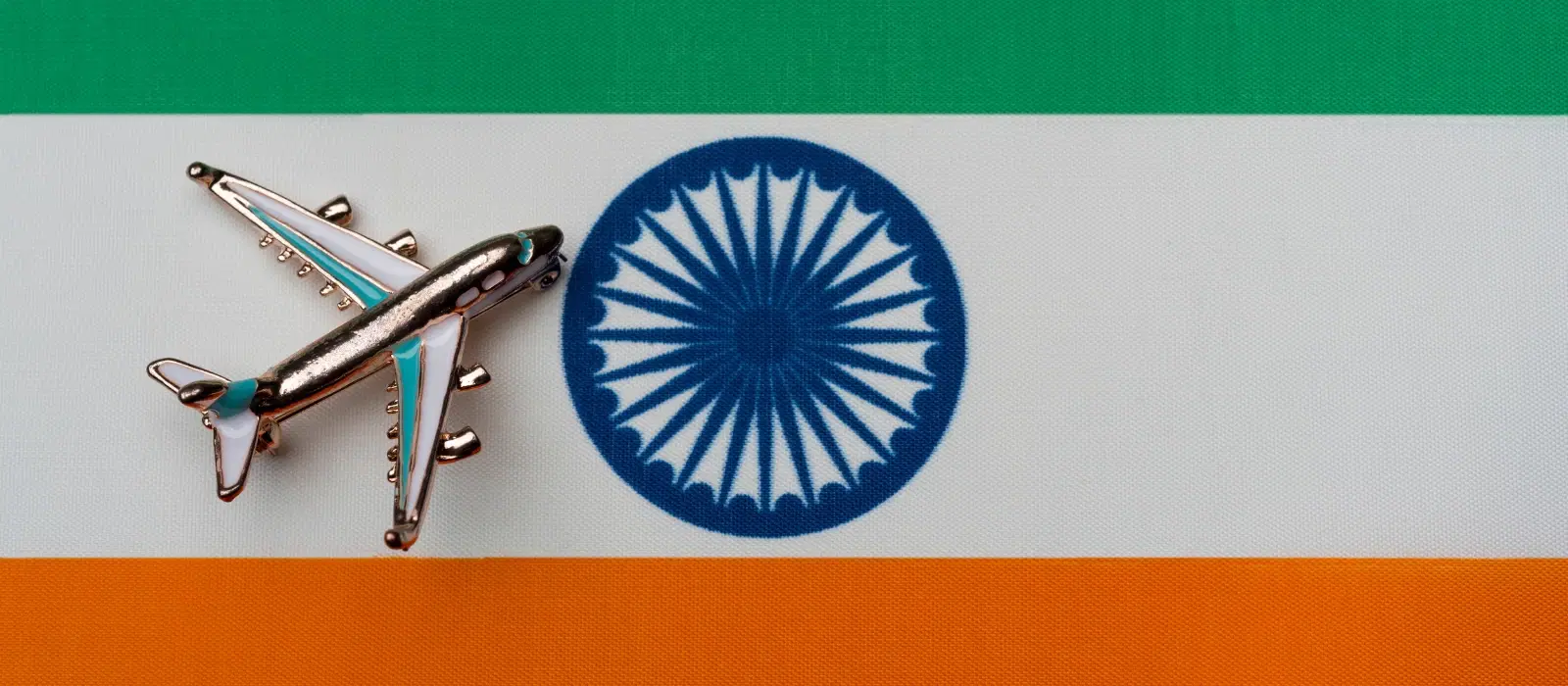
Did you know that responsible tourism in India is transforming travel into a force for good, benefiting local communities, preserving heritage, and protecting the environment? In recent years, sustainable tourism in India has emerged as a movement that not only ensures eco-friendly travel but also supports local artisans, wildlife conservation, and cultural heritage initiatives. This blog answers frequently asked questions about responsible tourism projects in India, exploring successful initiatives, practical tips for travelers, and the overall impact on communities and the environment.
Responsible tourism in India focuses on travel that emphasizes sustainability, ethical practices, and community involvement. It goes beyond simply visiting a destination; it is about engaging with local cultures, preserving the natural environment, and ensuring that tourism benefits local people. This form of travel aligns closely with eco-friendly travel India, wildlife conservation tourism India, and heritage preservation tourism India by encouraging practices that reduce environmental impact and celebrate cultural identity.
India is a country blessed with diverse ecosystems, rich cultural heritage, and a history of artisanal traditions. Responsible tourism is crucial here because it addresses environmental concerns and supports economic development, all while preserving local customs. By promoting community-based tourism India, these projects provide economic opportunities to local communities, ensuring that tourism leads to sustainable growth without compromising the country’s natural and cultural wealth.
The Kumarakom Responsible Tourism initiative in Kerala is a shining example of how responsible tourism can work wonders for both the environment and local communities. This globally recognized model intertwines community-based tourism with environmental conservation. Travelers visiting the backwaters can witness firsthand how the project supports local artisans and promotes sustainable practices that keep the natural beauty of the region intact.
Another compelling aspect of responsible tourism in India is the focus on wildlife conservation. Projects such as tiger tourism in Madhya Pradesh and elephant conservation initiatives in Rajasthan work to protect endangered species while offering unique, close-to-nature experiences for eco-conscious travelers. These wildlife conservation tourism India initiatives ensure that tourist activities do not disturb natural habitats and contribute to the long-term preservation of these majestic creatures.
India's rich history and cultural treasure trove are preserved through various initiatives that focus on heritage preservation. Programs that support local crafts, like the traditional art of Likhai, allow travelers to engage directly with local communities. In doing so, visitors gain a deeper understanding of local culture tourism India while contributing to the preservation of historical landmarks and traditional crafts.
When planning your next adventure, look for destinations in India that are committed to sustainable practices. Regions like Kerala, Rajasthan, and Madhya Pradesh have become synonymous with responsible travel destinations India. These areas have made deliberate efforts to ensure that their tourism industries are built around sustainability and ethical practices.
Travelers can make a difference by directly contributing to local communities. By purchasing handmade products, partaking in cultural activities, and choosing eco-friendly lodging, tourists support community-based tourism India initiatives. Such actions help local businesses thrive and maintain their cultural heritage while fostering a deeper connection between visitors and hosts.
It is vital for travelers to embrace environmentally conscious travel India practices. Simple steps such as using public transportation, reducing single-use plastics, and participating in green travel projects India can significantly lower your environmental impact. Each small effort contributes to a larger movement towards a more sustainable future in travel.
Despite its many benefits, responsible tourism in India faces challenges like limited awareness, insufficient infrastructure, and the difficulty of maintaining a balance between tourism growth and environmental preservation. Addressing these challenges requires collaboration between government bodies, local communities, and the private sector to broaden the impact of ethical tourism initiatives India.
The future of responsible tourism in India looks promising. Digital platforms are increasingly promoting ethical tourism, while initiatives such as those by the Responsible Tourism Society of India seek to raise awareness and drive smarter, more sustainable travel choices. As more travelers embrace these practices, the potential to scale up community-based tourism India and environmental conservation tourism India becomes greater, paving the way for an eco-friendly travel India revolution.
Did You Know? Responsible tourism projects in India not only preserve the environment but also empower local communities by providing sustainable livelihoods and promoting cultural heritage.
Responsible tourism initiatives in India focus on sustainable travel practices that benefit local communities, protect the environment, and preserve cultural heritage. Examples include the Kumarakom Model in Kerala and wildlife conservation projects in Madhya Pradesh.
Responsible tourism courses in India are educational programs designed to teach sustainable tourism practices, ethical travel principles, and community-based tourism strategies. They are often offered by universities and organizations promoting eco-tourism.
The Kumarakom Responsible Tourism initiative in Kerala is considered one of the best examples of responsible tourism in India, as it effectively integrates community development with environmental conservation.
Responsible travel destinations in India include Kerala for its backwater tours, Rajasthan for its rich cultural experiences, and Madhya Pradesh for its wildlife conservation tourism initiatives.
Travelers can practice environmentally conscious travel by choosing eco-friendly accommodations, reducing waste, supporting local businesses, and participating in green travel projects India.
Responsible tourism projects in India are transforming the way we travel by fostering experiences that benefit both tourists and local communities. By engaging in sustainable practices, supporting local cultures, and preserving natural heritage, travelers can contribute to a positive impact on India's future while exploring its diverse landscapes and rich traditions.